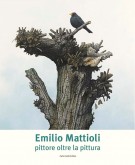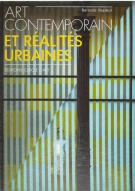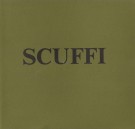Emilio Mattioli Pittore oltre la pittura
| Author(s) | Enrico Maria Davoli | ||
| Editor | Carlo Cambi Editore | Place | Siena |
| Year | 2013 | Pages | 52 |
| Measure | 24x29 (cm) | Illustration | ill. colori n.t. - colors ills |
| Binding | bross. ill. a colori con alette - paperback | Conservazione | Nuovo - New |
| Language | Italiano/Inglese - Italian/English text | Weight | 300 (gr) |
| ISBN | 8864031650 | EAN-13 | 9788864031651 |
| price | 10.00 € | ||
Add to cart
Presentazione di Valeria Tassinari.
Un artista profondamente radicato nella pianura come Emilio Mattioli ha scelto il nitore come cifra stilistica della sua pittura: una pittura antica, lenta e puntigliosa, che egli ripete nel tempo, tornando con un’attenzione da entomologo sulle cose (frutti, verdure, oggetti, frammenti di carta), sempre composte in nature morte essenziali, in combinazioni di volumi che non conoscono penombra, ma giocano al trompe-l’oeil.
Uno sguardo analitico e cristallino, che ama impossessarsi soprattutto del paesaggio rurale, spingendosi in lontananza per definire la foglia immobile, la spiga, la tegola sbrecciata sul casale, come avrebbe fatto un pittore fiammingo ancora indifferente alle seduzioni della prospettiva leonardesca.
Un processo di osservazione e riproduzione del dato sensibile che si spinge fino al paradosso se, persino nel dipingere la nebbia, l’attenzione dello sguardo non si affievolisce mai e, nonostante lo sfaldarsi degli elementi, si concentra vigile sul primo piano per mettere a fuoco l’effetto di evanescenza. O un processo di analisi quasi lenticolare, come accade per i più recenti lavori, dove i dettagli di un albero secco divengono esaltate esibizioni di virtuosismo, che invitano a oltrepassare l’immagine d’insieme per entrare nelle fibre della materia.
Presentation by Valeria Tassinari.
An artist deeply rooted in the plain like Emilio Mattioli has chosen clarity as the stylistic code of his painting: an ancient, slow and meticulous painting, which he repeats over time, returning with an entomologist's attention to things (fruits, vegetables, objects, fragments of paper), always composed in essential still lifes, in combinations of volumes that do not know penumbra, but play with trompe-l'oeil.
An analytical and crystalline gaze, which especially loves to take possession of the rural landscape, reaching into the distance to define the motionless leaf, the ear, the chipped tile on the farmhouse, as a Flemish painter still indifferent to the seductions of Leonardo's perspective would have done.
A process of observation and reproduction of sensitive data that goes as far as the paradox if, even when painting the fog, the attention of the gaze never fades and, despite the disintegration of the elements, it concentrates vigilantly on the foreground to focus the fading effect. Or an almost lenticular process of analysis, as happens with the most recent works, where the details of a dry tree become exalted displays of virtuosity, which invite you to go beyond the overall image to enter the fibers of the material.
Note alle condizioni del volume
Nessuna. (T-CA)
Recommended books...





